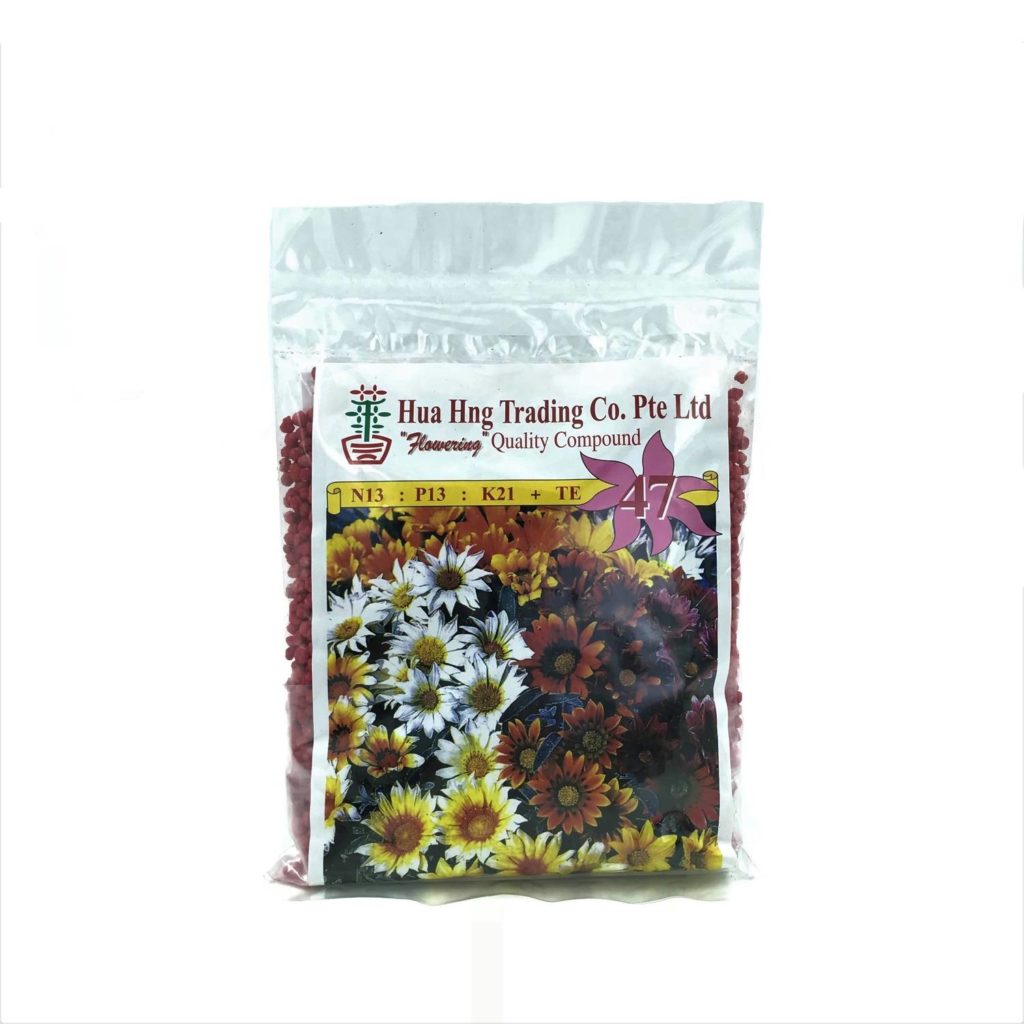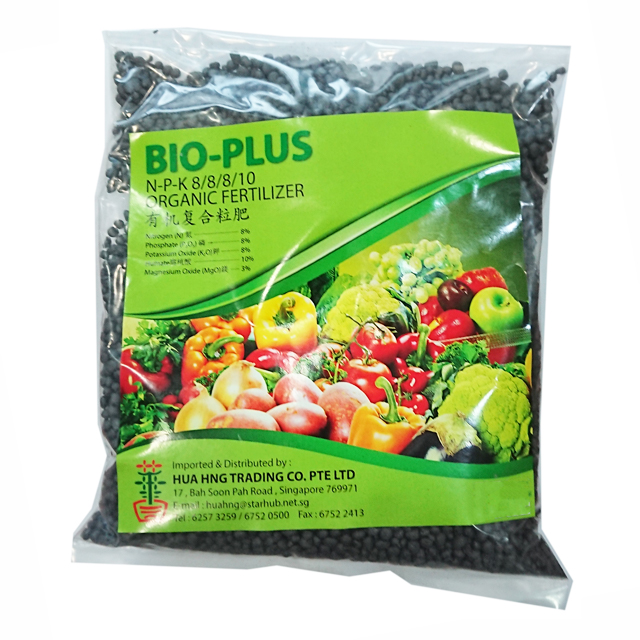An Introduction to NPK
When buying fertilisers, most customers will inevitably see the letters NPK with numbers printed on the bags. While seasoned gardeners know exactly what they need, these letters and numbers might be intimidating and confusing for beginners. In this post, we will do our best to explain the meaning and uses of NPK.
NPK stands for the 3 macronutrients found in most fertilisers which are essential for plants. They are nitrogen (N), phosphorous (P) and potassium (K) and it is important to note that each of the main macronutrients provides different needs:
Nitrogen (N) – Responsible for leaf growth in plants.
Phosphorus (P) – Responsible for root growth, and flower and fruit development.
Potassium (K) – Helps the overall function of plants, flowering and fruiting, as well as increases resistance to diseases.
The proportion of macronutrients in fertiliser plays a huge factor in what benefits they provide the plants. General fertilisers tend to have balanced NPK values (5-5-5 / 8-8-8), while specialized fertilisers will have a higher value of a specific macronutrient depending on the purpose.

In the example above, Hua Hng’s flowering fertiliser needs to promote flowering over everything else, therefore the potassium (K) values are higher than the other nutrients.
Other nutrients
Occasionally, fertilisers will contain additional humates/humic acids, as shown in our Bio-plus NPK 8:8:8 fertiliser, which contains 10% humate. Humic acid is a soil conditioner and chelator, it will enable the soil to retain more water, increase plant root growth and metabolism, as well as increase resistance to environmental stress. It also combines minerals into organic compounds that are more easily absorbed by plants.

Another notable nutrient is Magnesium oxide (MgO), when fertilisers high in K values have been repeatedly applied to soil, there will be a magnesium deficiency in the soil, causing a drop in soil pH value. The increase in acidity affects root growth and reduces nutrient uptake, causing lower yields in plants. Having MgO in fertiliser prevents this from happening and maintains the soil pH values.
NPK Numbers
The numbers that follow behind the alphabet show the concentration of nutrients in that particular fertiliser. Take, for example, Hua Hng’s Fruiting compound fertiliser, which has a value of N12 : P12 : K17 : MgO2 + TE. This implies that we have 12% of nitrogen and phosphorous and 17% of potassium in the fertiliser. Applying 1kg of this fertiliser will add 120g of nitrogen and phosphorous and 170g of potassium to the soil.

In the case of Hua Hng’s fertiliser, you will notice the term ‘TE’, this term stands for trace elements. Trace elements are secondary macro-nutrients such as calcium, magnesium, sulfur, etc., and micronutrients such as copper, iron, manganese, molybdenum, zinc, etc., that are available in very small amounts.
The numbering on fertilisers can also help you identify what type of fertiliser it is. As a rough guide, if each of the fertiliser’s individual NPK numbers is below 10%, the fertiliser is usually made with organic materials. Otherwise, if the value is above 10% for any of the NPK values, it may be a sign that it may be a compound chemical-based fertiliser.
Conclusion
For the gardener who fertilises their gardens regularly, we recommend not worrying about trace elements as these are all available in the soil and as long as you are not doing large-scale commercial farming, you should not encounter deficiencies. Furthermore, trace elements are available in regular fertiliser as well. When choosing your fertiliser, the most important would be matching NPK values to your needs. In short, nitrogen (N) is for bushier foliage and greens, phosphorous (P) is for a stronger root system to assist in nutrient intake, and potassium (K) is for more flowers and fruits.
